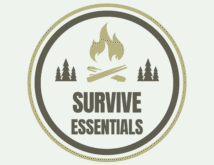Venturing into the wild, especially areas populated by bears, presents an exhilarating yet challenging experience for backpackers. The allure of pristine natural landscapes and the thrill of encountering wildlife in their habitat draw many to these remote areas. However, with the adventure comes the responsibility of ensuring both personal safety and the protection of these magnificent creatures. A crucial aspect of this responsibility is understanding how to safely store food in bear country.
Bears, with their incredibly keen sense of smell, can detect food from miles away, making your campsite a potential target if precautions are not taken. The intersection of bear habitats with popular backpacking trails necessitates informed practices to prevent bear encounters, protect wildlife, and ensure a safe outdoor adventure for everyone involved.
Why focus on food storage? Improperly stored food can attract bears to campsites, leading to potential danger for campers and bears alike. Bears habituated to human food may become a safety hazard, often resulting in the bear being euthanized. Therefore, safely storing food not only safeguards backpackers but is also a vital action to protect bear populations.
This guide aims to equip you with the knowledge and tools needed to navigate bear country safely. By adhering to bear-proof food storage techniques and understanding bear behavior, backpackers can minimize risks and enjoy a harmonious experience in nature. Whether you’re a seasoned outdoor enthusiast or planning your first backpacking trip in bear territory, these insights will help you prepare adequately, ensuring your adventure is memorable for all the right reasons.
For those gearing up for their journey, considering the right equipment is key. Browsing through the best gear for outdoor adventures can provide you with an array of options to enhance your trip, ensuring you’re well-prepared for the unique challenges of bear country. From bear-resistant food containers to essential survival tools, the right gear is your first step towards a safe and enjoyable backpacking experience.
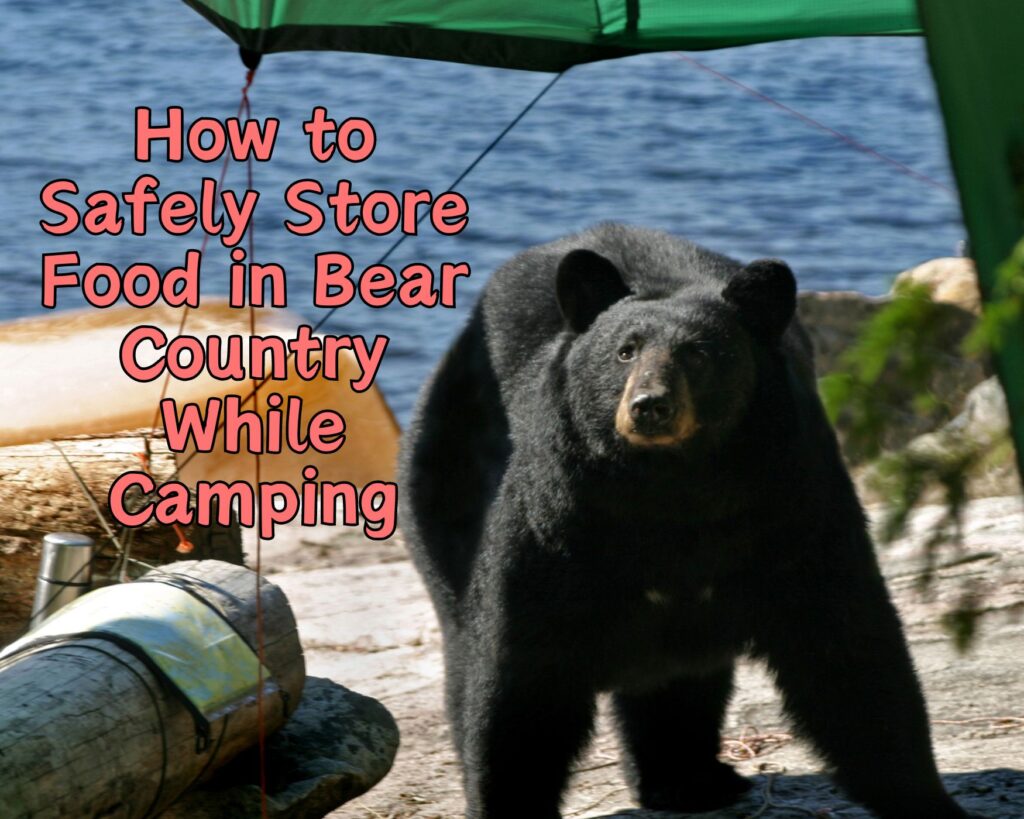
Understanding Bear Behavior
To navigate bear country safely, it’s imperative to understand bear behavior, particularly their attraction to human food and the potential risks this poses. Bears are omnivores, with diets that can include anything from berries and fish to, unfortunately, campsite snacks if given the opportunity. This section delves into the reasons behind bears’ attraction to campsites and the importance of minimizing these encounters through proper food storage.
The Draw of Human Food
Bears have an acute sense of smell, estimated to be seven times more powerful than a bloodhound’s. This incredible olfactory ability means they can detect food odors from miles away, drawing them towards sources of smell, which often lead them to campsites. Once a bear associates human presence with easy access to food, it may continue to visit known campsites, increasing the risk of bear-human interactions. Safely Store Food in Bear Country, this article should help you out with that!
The Risks of Habituation
When bears learn to associate humans with food, they can become habituated, losing their natural wariness of humans. This behavior not only puts campers at risk but also the bears themselves. Habituated bears are more likely to be involved in negative encounters with humans, leading to possible relocation or euthanization of the bear.
Bear Safety Backpacking Tips
- Store Food Properly: Always use bear-resistant food containers or employ bear hang techniques to keep food out of bears’ reach.
- Minimize Odors: Use odor-proof bags and containers to store food and scented items. Clean cooking equipment thoroughly after use.
- Campsite Selection: Choose campsites wisely, avoiding areas with obvious bear activity or areas recommended against by park authorities.
Understanding and respecting bear behavior is the foundation of safely storing food in bear country. By taking proactive measures to minimize odors and secure food, backpackers contribute to the safety of both themselves and the bear population. For those planning their next wilderness adventure, equipping yourself with knowledge and the right gear, such as exploring options on the best gear for outdoor adventures, is a step toward a safe and enjoyable backpacking experience in bear territory.
Click Here to buy Get The #1 Best Campfire Cooking Kit For Your Next Adventure!
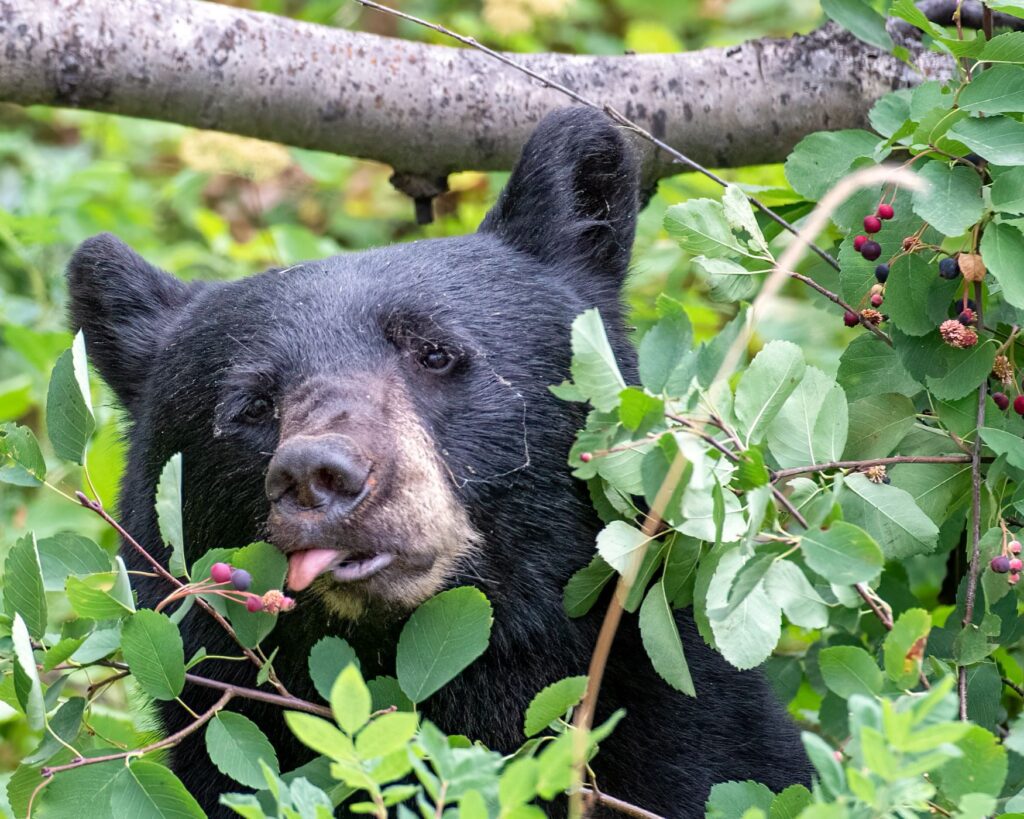
Options for Bear-Proof Food Storage
Navigating through bear country requires backpackers to employ effective food storage methods that protect both themselves and the wildlife. The choice of storage solution can vary based on personal preference, the specifics of the trip, and local regulations. This section outlines the primary options for bear-proof food storage, highlighting the benefits and considerations of each to help you make an informed decision for your next backpacking adventure.
Bear Canisters
Bear canisters are rigid, portable containers designed to resist attempts by bears to open them. They are an excellent choice for backpackers because they:
- Prevent Odors: Many are designed to minimize the scents that escape, reducing the chance of attracting bears.
- Are Versatile: Can be used in various terrains where hanging food is impractical.
- Offer Peace of Mind: Provide a secure, worry-free way to store food, knowing it’s safe from wildlife.
When selecting a bear canister, consider the BV500 Journey Bear Resistant Food Container – Extra Large, known for its durability and ample storage space, making it a top choice for longer treks in bear country.
Bear Bags
An alternative to canisters, bear bags are made of high-strength fabric designed to hang food out of bears’ reach. They are lightweight and compact, making them suitable for backpackers who are mindful of their pack weight. However, bear bags require trees of a certain height and strength, and proper hanging technique to be effective.

Bear Lockers
In some established campsites within bear-heavy areas, bear lockers are provided. These communal storage boxes offer a convenient and secure way to store food and scented items. While highly effective, their availability is limited to certain areas, and relying solely on them may not be feasible for remote backcountry trips.
Comparing Bear Bags vs. Bear Canisters
- Security: Canisters generally offer more security and are bear-proof by design, while bags rely on the correct hanging technique to deter bears.
- Convenience: Canisters are easier to pack but heavier and bulkier. Bags are lighter and can be more easily squeezed into a backpack.
- Regulations: Some parks mandate the use of canisters due to their proven effectiveness, so always check local guidelines before your trip.
For those planning their backpacking journey, considering all aspects of bear safety, including secure food storage, is essential. Further enhancing your readiness with the right outdoor gear can make all the difference. For a comprehensive guide to selecting the best equipment for your adventure, visit the best gear for outdoor adventures. Additionally, creating a serene atmosphere back home that reflects your love for the wilderness can be as simple as adding touches like Life is Better in the Woods Canvas Wall Art, reminding you of your adventures long after you’ve returned.
Choosing the right bear-proof food storage method is a key step in planning your backpacking trip in bear country. By considering the options and selecting the solution that best suits your needs, you can ensure a safe and enjoyable experience for yourself and the natural inhabitants of the wilderness you’re exploring.
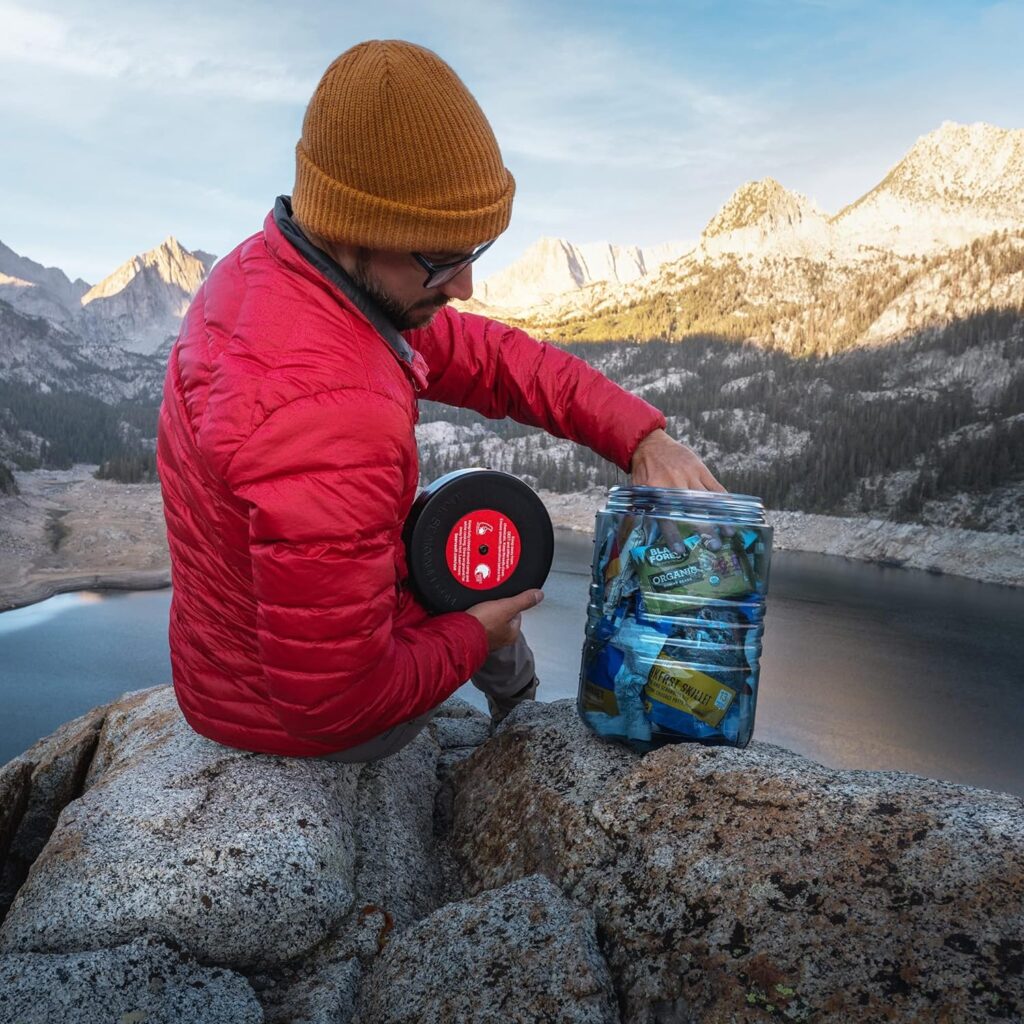
Step-by-Step Guide to Hanging Food
One of the most traditional methods of protecting your food from bears while backpacking in bear country is the bear hang. When executed correctly, it can be an effective way to store food, toiletries, and other scented items that might attract bears. This section provides a detailed, step-by-step guide to properly hang your food using the bear hang technique.
Preparing for the Bear Hang
Before you start, ensure you have a lightweight, durable bag (bear bag), a carabiner, and at least 50 feet of strong, lightweight rope. Selecting a suitable tree and branch is also crucial; look for a branch that is at least 15-20 feet off the ground and extends horizontally at least 10 feet from the trunk.
Step 1: Pack Your Bear Bag
Place all food items, toiletries, and any other scented items into your bear bag. Using odor-proof bags inside your bear bag can further help minimize scents.
Step 2: Attach the Rope
Tie one end of the rope to your carabiner, then attach the carabiner to your bear bag. Make sure your knot is secure to prevent any accidents during the night.
Step 3: Find the Perfect Branch
Look for a sturdy branch that meets the height and distance requirements mentioned earlier. This ensures that bears won’t be able to reach the bag from the ground or the tree trunk.
Step 4: Throw the Rope Over the Branch
Tie a small weight to the other end of the rope to help throw it over the selected branch. Once over the branch, retrieve the end and untie the weight.
Step 5: Hoist Your Bear Bag
Pull on the rope to hoist your bear bag up. The bag should be at least 12 feet off the ground to ensure it’s out of reach of bears.

Step 6: Secure the Rope
Once the bag is hoisted, tie the rope to another tree or a sturdy object on the ground. Ensure it’s tight and secure to prevent any sagging overnight.
Bear Hang Techniques and Tips
- Practice at Home: Before heading out, practice the bear hang technique to become proficient and efficient.
- Nightly Routine: Make hanging your bear bag part of your nightly routine, doing so well before dark to avoid complications.
- Double Bagging: For added protection, consider double bagging your food and scented items to minimize odors further.
While the bear hang method is widely used, it’s important to note that some areas with dense bear populations may require the use of bear canisters due to the difficulty of finding suitable trees or to adhere to local regulations. Always check the specific requirements for the area you plan to visit.
For backpackers seeking additional gear to prepare for their journey, considering secure and reliable options like the Rubbermaid ActionPacker Lockable Storage Box, 35 Gal, can offer an extra layer of protection for your food and equipment while camping. Additionally, for those exploring bear-resistant food containers, the BV500 Journey Bear Resistant Food Container – Extra Large provides ample space and security for your provisions in bear country.
By mastering the bear hang technique and equipping yourself with the right tools and knowledge, you can ensure your backpacking trip is safe and enjoyable, with minimal impact on the natural environment and its wildlife inhabitants.
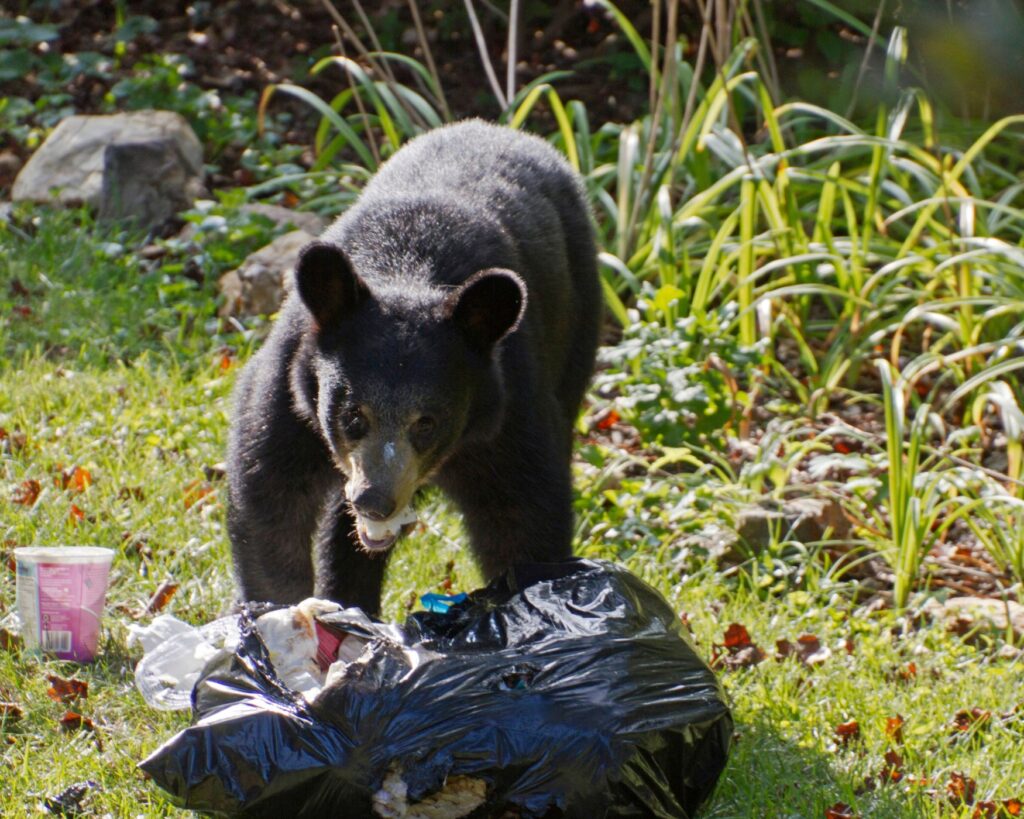
Best Practices for Using Bear Canisters
Bear canisters are a reliable and increasingly preferred method for storing food safely in bear country. These sturdy, bear-resistant containers are designed to withstand the efforts of bears trying to access your food, providing a secure solution for backpackers. Implementing best practices for using bear canisters not only ensures the safety of your food supply but also protects the bears by preventing them from becoming accustomed to human food. Here’s how to maximize the effectiveness of your bear canister during your backpacking adventures.
Selecting the Right Canister
- Capacity: Choose a bear canister that can hold all your food, toiletries, and any other scented items for the duration of your trip. Consider group size and trip length when selecting the size.
- Bear-Resistant Certification: Opt for canisters that have been certified bear-resistant by regulatory agencies or wildlife organizations to ensure they meet safety standards.
Packing Your Bear Canister
- Odor Control: While bear canisters are designed to be secure, minimizing odors can help reduce the likelihood of attracting bears to your campsite. Use odor-proof bags inside the canister for an extra layer of protection.
- Efficient Packing: Organize items by the order in which you’ll use them, with items not needed until later at the bottom. This minimizes the need to unpack and repack the canister, reducing the chance of odors escaping.
Placement in Camp
- Distance from Tent: Place the canister 100 feet or more from your sleeping area to reduce the risk of a bear encounter.
- Visibility: Keep the canister in an area where you can see it but not so hidden that a bear could roll or carry it away unnoticed.
- Wedging: If possible, wedge the canister between rocks or heavy logs to prevent a bear from rolling it away. However, ensure it’s not so tightly wedged that a bear could crush the canister trying to access it.
During the Day
- Access and Closing: Always close the canister immediately after use to ensure it’s secure. Be mindful of where you open your canister during the day, avoiding areas where it could roll away or become lost.
- Carry It: Even when on the move, keep your scented items and food in the canister to avoid attracting bears as you hike.
Leveraging Bear Canisters for a Safe Trip
Investing in a high-quality bear canister, such as the BV500 Journey Bear Resistant Food Container – Extra Large, is a wise decision for any backpacker venturing into bear country. Not only does it protect your food from bears, but it also safeguards bears from the dangers of human food conditioning.
For those looking to outfit their backpacking or camping trips with essential gear, remember to check out comprehensive resources and equipment guides, like the best gear for outdoor adventures, to ensure you’re well-prepared for any situation in the wild.
Bear canisters are a key component of responsible backpacking in bear-populated areas. By following these best practices, you can enjoy the beauty and solitude of bear country safely and ethically, ensuring that these magnificent creatures remain wild and free.
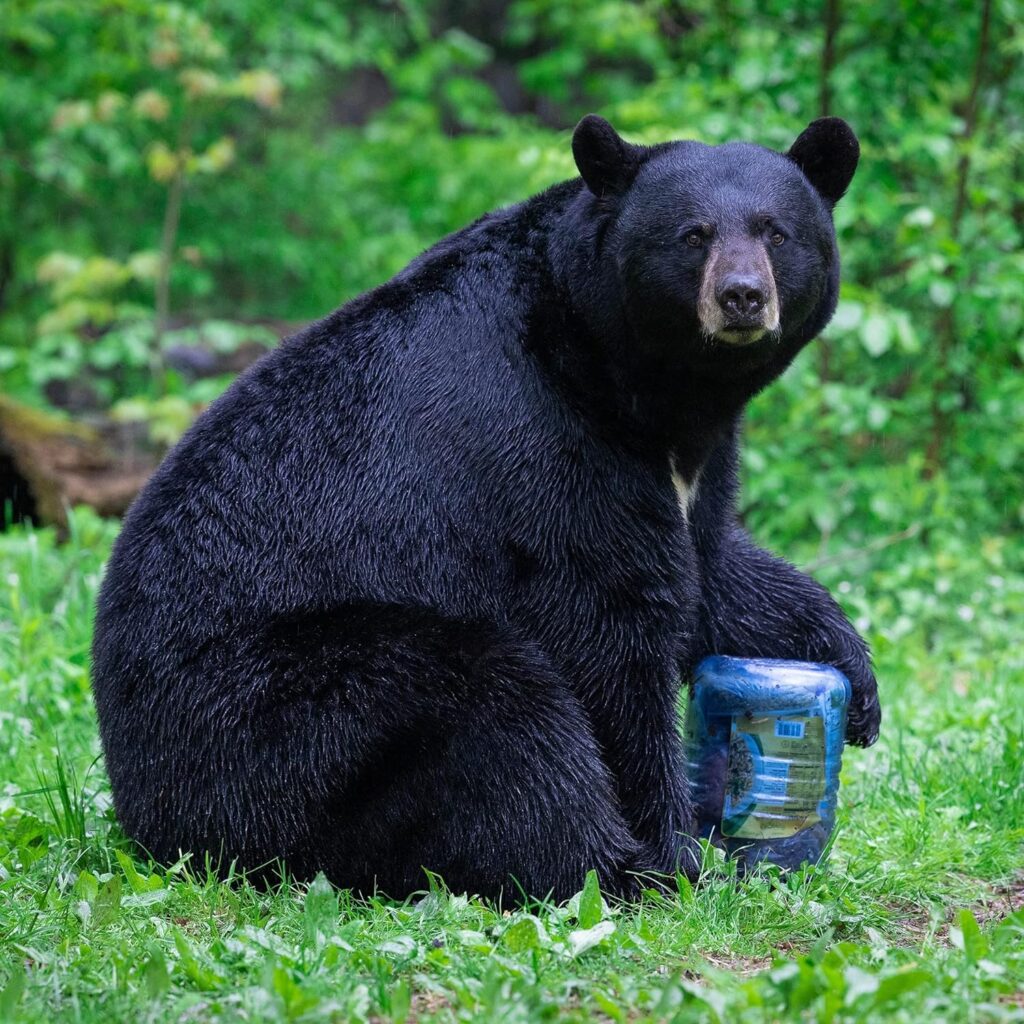
Preventing Bear Encounters
While storing food safely is a crucial aspect of backpacking in bear country, there are additional steps you can take to minimize the likelihood of bear encounters. Preventing these encounters not only ensures your safety but also protects bears by reducing the chances of them becoming habituated to human presence and food. Here are comprehensive strategies to avoid attracting bears to your campsite and ensure a peaceful coexistence.
Manage Food Odors
- Cook Away from Camp: Prepare and cook your meals at least 100 yards away from your sleeping area to keep food odors away from your tent.
- Choose Foods Wisely: Opt for foods that have less odor or are packaged in odor-proof packaging to minimize attracting bears.
- Clean Up Thoroughly: Immediately clean all cooking utensils and dishes after eating to eliminate residues that could attract bears.
Secure All Scented Items
- Not Just Food: Bears are attracted to any scent, not just food. Store toiletries, sunscreen, insect repellent, and even trash in your bear-proof container or hang them properly.
- Sanitation: Use biodegradable soap and ensure all wastewater from dishwashing or bathing is disposed of well away from your campsite.
Make Noise While Hiking
- Stay Vocal: Talk, sing, or make noise, especially in dense vegetation or near streams where bears might not hear you coming. This alerts bears to your presence, giving them time to move away.
- Hike in Groups: Bears are less likely to approach larger groups of people, so hiking in groups is safer than solo treks.
Know How to React
- Never Run: If you encounter a bear, do not run. Speak calmly and firmly while backing away slowly. Running can trigger a bear’s predatory instincts.
- Make Yourself Big: Use jackets, backpacks, or arms to appear larger if a bear seems interested or approaches.
- Bear Spray: Carry bear spray and know how to use it. It can be an effective deterrent in close encounters.
Educate Yourself
Before heading into bear country, educate yourself about the bears you might encounter, whether they’re black bears or grizzlies, as behaviors and recommended safety measures can differ. Resources like why you should ditch your smartphone for outdoor adventures offer insights into staying present and prepared in nature, enhancing your safety and wilderness experience.
Adopting these preventive measures and behaviors significantly reduces the risk of bear encounters and ensures that if encounters do occur, they are non-confrontational. Remember, the goal is to enjoy the beauty of bear country while ensuring the safety of both humans and bears. For additional tips on safely enjoying outdoor adventures and ensuring you have the right gear, including bear-resistant containers like the Rubbermaid ActionPacker Lockable Storage Box, 35 Gal, visit the best gear for outdoor adventures. Integrating these practices into your backpacking routine will allow you to explore the wilderness with confidence and respect for its wild inhabitants.
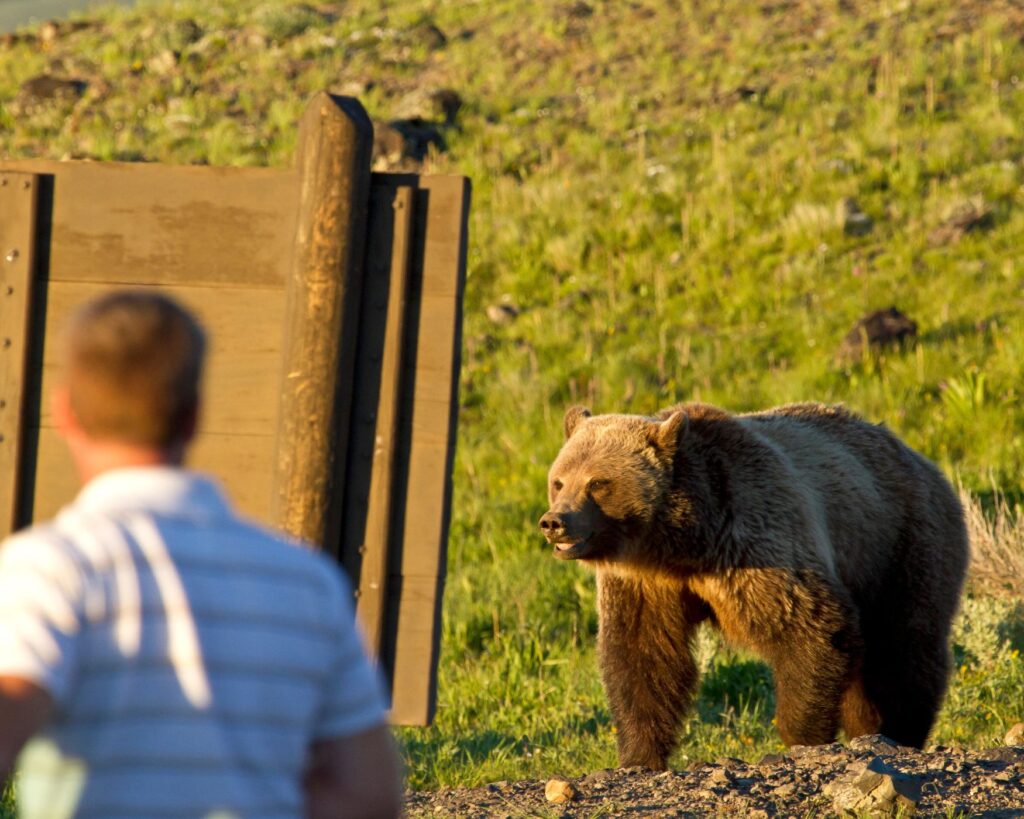
Recommended Bear-Resistant Products and Checklist for Backpacking in Bear Country
To ensure a safe and enjoyable backpacking experience in bear country, equipping yourself with the right bear-resistant products is essential. This final section highlights recommended products that have proven effective in keeping food secure from bears, followed by a comprehensive checklist to prepare you for your adventure.
Recommended Bear-Resistant Products
- BV500 Journey Bear Resistant Food Container – Extra Large: This extra-large bear canister offers ample space for your food and scented items, making it ideal for longer trips or group backpacking.
- Rubbermaid ActionPacker Lockable Storage Box, 35 Gal: For those traveling by car to their hiking start point or camping in accessible areas, this lockable box provides robust protection against bears and other wildlife.
- Bear Bags: Lightweight and portable, bear bags are a good alternative for areas where trees are available for hanging food away from bears.
- Bear Spray: A must-have for personal safety, bear spray can deter a bear in close encounters. Ensure it’s accessible and you know how to use it.
Backpacking in Bear Country Checklist
- Bear-Resistant Food Storage: Choose the most suitable option (canister, bag, or locker) based on your destination and group size.
- Odor-Proof Bags: To minimize food smells that attract bears.
- Bear Spray: Keep it within easy reach and know how to deploy it.
- Knowledge of Bear Behavior: Understand the basics of bear behavior to reduce the risk of encounters.
- Cooking Equipment: Portable stove, utensils, and biodegradable soap for cooking and cleaning well away from your sleeping area.
- Food Selection: Opt for less aromatic food options to keep bears uninterested.
- Camping and Hiking Gear: Ensure you have all necessary equipment for your trip, taking into account weather conditions and terrain.
- First Aid Kit: Always be prepared for minor injuries or emergencies.
- Map and Compass/GPS: For navigation, especially in remote areas where cell service may be unavailable.
- Emergency Plan: Know what to do in case of a bear encounter or other emergencies.
For an enhanced outdoor experience and additional safety, incorporating items like Life is Better in the Woods Canvas Wall Art can bring the serenity of nature into your home, reminding you of the importance of preserving these wild spaces.
By following the guidelines outlined in this article and preparing thoroughly for your trip, you can enjoy the breathtaking beauty of bear country with confidence. Remember, the goal is not just to protect ourselves and our food from bears, but also to protect these magnificent animals by preventing them from becoming accustomed to human food. Responsible practices ensure that future generations will continue to enjoy wilderness backpacking experiences in bear country. Safe travels, and respect the wild.
If you are going camping, you need to get the best Campfire Cooking Kit for your next trip into the woods!
As an Amazon Associate we earn from qualifying purchases through some links in our articles.
